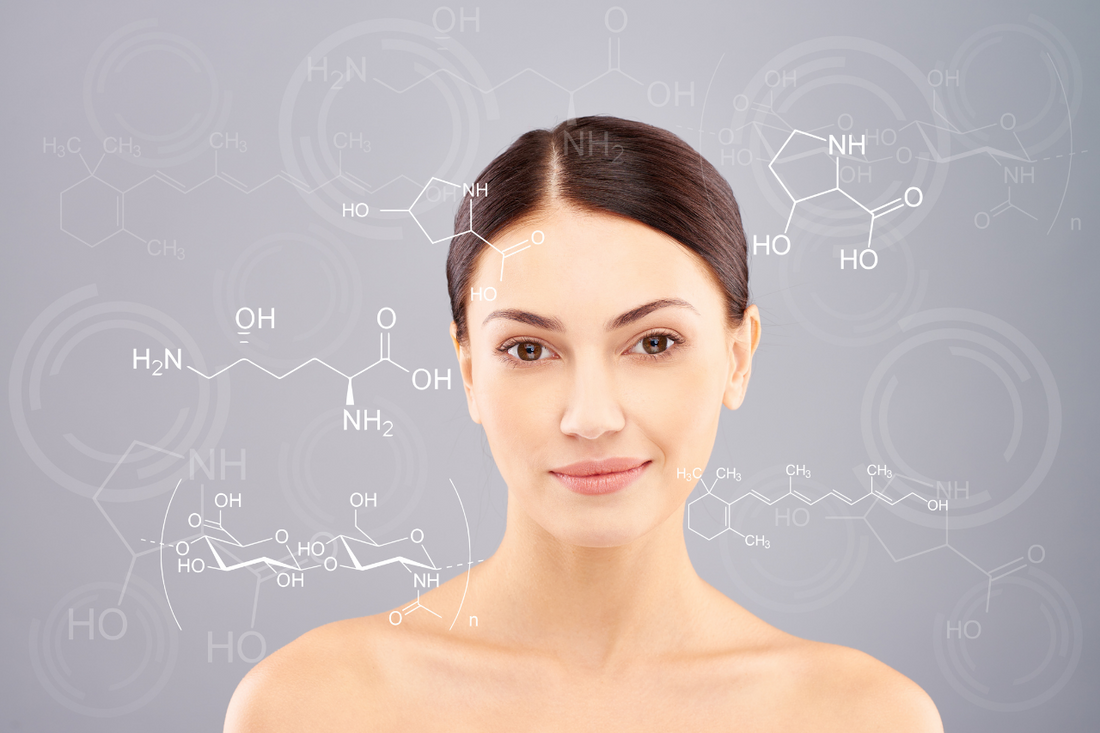Blog
Here's How to Treat Dry Skin as You Get Older
Here’s how to treat dry skin, an inevitable skin change that comes with aging. In this post, learn about ingredients and tips that will lead to softer, smoother and more touchable skin. At Apothekari, our moisturizers are one of the best ways to manage dryness from head to toe. Shop Moisturizers Why Causes Dry Skin As You Get Older? Your skin ages in two main ways: 1. Extrinsic Aging Extrinsic aging is related to the impact of the environment on your skin. This includes exposure to the sun, pollution and smoke, plus diet and lifestyle factors. Stress, sleep, exercise all contribute to extrinsic aging. Together, they can lead to skin thickening, freckles, age spots and some precancerous changes such as actinic keratosis and skin cancers themselves. The sun’s UV rays damages collagen, elastin and other elements that lead to skin that sags, stretches, and loses its ability to snap back after stretching. Mature skin may also become drier, bruise and tear more easily, and take longer to heal. 2. Intrinsic Aging Intrinsic aging is something that we can’t fight against and which occurs as part of the natural aging process: Thinning of the dermal and epidermal skin layers, resulting in a smaller supply of nutrients to the cells A decline in the production of new skin cells and skin supportive fibers (collagen, elastin, etc) A decreased ability to retain moisture A decline in levels of the hormone, estrogen. Estrogen not only stimulates oil glands, which helps keep skin hydrated, it also helps to maintain the skin’s structure. Dryness affects the skin on all of your body. This includes your face, arms and legs, plus parts of your body, you may not have considered, like your vulva and vagina. More Than Lip Service Vulvar and Vaginal Moisturizer offers fast, hormone-relief for when you experience dryness down there. What is the Best Natural Ingredient for Dry Skin? Whether skin is mature or younger, a good moisturizer is key to help treat dry skin. Moisturizers work by either providing hydration, or by helping to prevent its loss, and they contain 3 main classes of ingredients: Humectants: Help to attract moisture to the skin. Glycerin, hyaluronic acid, urea and aloe vera are humectants. Emollients: Smooth and soften skin by helping to repair cracks in the skin barrier. They prevent moisture loss. Butters, oils, esters, lipids, and fatty acids are all considered emollients. Occlusives: Work by forming a protective coating on your skin’s surface, forming a protective barrier that locks moisture in and keeps harmful particles out. They tend to be oily or waxy. Petrolatum, lanolin, beeswax, jojoba oil, and olive oil are examples. Occlusives like oils, can also be emollients. Each class of ingredient provides benefits of its own, and they’re often combined together for the best results. For best results apply them to slightly damp skin to help lock in the moisture. What is the Best Thing for Dry Skin | Top Tips Using moisturizer is an essential step in dry skin management, but there are many lifestyle changes that you can implement to help as well: Introduce Humidity. The drier the air, the drier the skin. It’s a lesson, I re-learn every time I travel to the desert-like climate in Arizona. Consider using a humidifier in the room where you spend the most time, which, for many of us, is the bedroom. Change Up Your Diet. Increasing your intake of foods rich in omega-3 fatty acids has been shown to help improve the skin’s oil production, improve hydration and minimize the signs of aging. Look for them in nuts (walnuts are a rich source), olive oil, avocados and salmon. Watch Your Alcohol Consumption. Ah yes, a glass of red wine on a Friday evening is very appealing. We’re not telling you to give it up completely, but alcohol, along with caffeine, act as diuretics that can lead to dehydration and drier skin. Up the water intake to help counteract the effect if you can. Exfoliate. No matter how much you moisturize, dry skin will stay dry without some light exfoliation. For the face, check out our AHA-Mazing Clean Cleansing Gel and our Bespoke Vitamin C Serum, which hydrates and exfoliates as well. Cleanse Gently. Harsh cleansers can strip away skin’s protective natural oils. Choose one that is gentle—the one we’ve linked to above is gentle, yet also effective. Add In An Oil. If you’re already using a moisturizer and skin is still dry, consider adding in an oil. These help to lock in the moisture delivered by a moisturizing cream or lotion, relieving dryness even further. Our Antioxidant Face Oil is a boon to drier skin on the face while our Lemon Rose Body Oil offers luxurious hydration post shower or bath. Water—but, don’t make it hot! Hot water strips away skin’s protective oils. Switch to lukewarm and stay away from hot water when you shower, bathe or wash.
Learn moreHyaluronic Acid Love
When it comes to effective skin care ingredients, hyaluronic acid skin care products (along with related sodium hyaluronate) rank right up there with other superstars including l-ascorbic acid, retinoids and sunscreen. This naturally occurring substance is a carbohydrate that is found in our joints, our eyes and connective tissue, along with our skin. It helps to lubricate things and also has an immense capacity to attract and hold large quantities of moisture. It can do this without the skin receiving too much water, which can be just as bad for skin as too little. Aging skin loses its ability to maintain moisture, resulting in the visible loss of firmness, pliability, and plumpness. Hyaluronic acid acts as a humectant (attracts moisture from the environment into the skin) and replenishes moisture that is essential to the appearance of younger-looking, healthy and supple skin. Other ingredients, including glycerin and propanediol also do this, but hyaluronic acid is far more effective, capable of holding 1000 times its weight in water! The result is skin that looks and feels softer, smoother and hydrated, with a diminished appearance of fine lines and wrinkles. What about sodium hyaluronate? This salt form of hyaluronic acid also acts as a humectant but is more stable and less likely to oxidize. It also has a lower molecular size, helping it to penetrate deeper into the skin. Chemists, however, have developed low molecular weight versions, which solves this issue. The key is not to go too low with the molecular weight as this can lead to skin inflammation. Hyaluronic Acid Skin Benefits – More… You don’t need super high concentrations of either sodium hyaluronate or hyaluronic acid. Concentrations of 2% and less deliver great results so don’t be surprised to see them listed at the end of the ingredient list. Higher concentrations can conversely, dry the skin. While hydration is the main reason to incorporate hyaluronic acid, it also can: Increase skin elasticity Fight inflammation, thereby helping to soothe skin irritations such as atopic dermatitis and rosacea as well Deliver antioxidant benefits, helping to protect skin against free radical damage. Useful for all skin types, we love hyaluronic acid for its multi-tasking ability. Oily or combination skin types benefit from non-greasy hydration. Because it is so gentle, even sensitive and redness prone skin is able to tolerate it. Find it as sodium hyaluronate in our Bespoke Vitamin C 15% Serum (10% too).
Learn more


